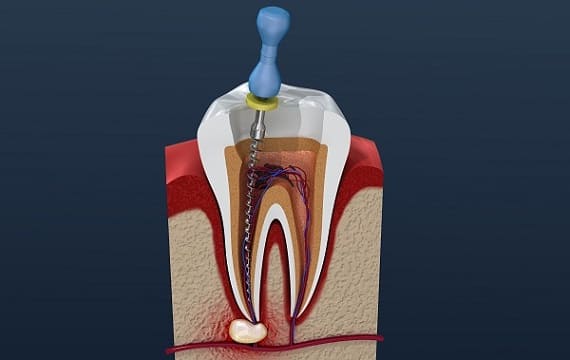The technical term for root canal therapy is endodontic therapy. To heal infected tooth pulps, a series of procedures are used in this treatment.
The crown and root are the two different parts of every tooth. Dental pulps are the cellular components that make up the internal portions of the root, including sensory nerves, blood vessels, connective tissues, and other cellular entities. This part requires root canal therapy if it is damaged.
This serious dental ailment is brought on by cavities that penetrate the crown and reach the dental pulp. Injuries can also contribute to it occasionally. The treatment calls for several clinical appointments and several procedures. To confirm root canal damage, your dentist may perform several X-ray examinations, as well as heat and electric pulp tests.
To access affected pulp within canals, a large incision must be made through the crown. Using specialized tools and irrigation, the infected pulp is extracted, and the root canals are cleansed and shaped.
After the debris is extracted, the canals are restored with special infill materials. The canal opening is now coated with a second layer of distinctive filler material. While the new crown is being prepared, this temporary covering will be in place for a few days. The top of the healed tooth is coated by a crown or cap that mimics a natural tooth.
The tooth's pulp chamber is an integral component. The sensory nerves located in this region are responsible for communicating to your brain when you have a severe toothache. This is advantageous since you can now take corrective action. If this part were to be missing, you wouldn't know if a tooth was decaying until you have lost it.
These days, practically all dental clinics routinely perform this surgical procedure. To stop tooth loss, it is necessary to choose this operation early on. With good oral hygiene, root canals have a high success rate and the restored tooth could last a lifetime.
The price of root canal therapy in India can range from roughly INR 1500 to INR 12,000, depending on the location and severity of the affected tooth.
To maintain the therapy for a long time, appropriate post-meal rinsing, twice-daily brushing and avoiding really hard food items are all that is required.

When nerve tissue or pulp is damaged, it degrades and the pulp chamber's bacterial population grows. An infected tooth is brought on by germs and other decaying material. A painful pus-filled pocket known as an abscess develops at the end of a root.
The nerve and unhealthy pulp are extracted, and the inside of the tooth is cleansed and sealed, during a root canal procedure. After the tooth has broken through the gums, the tooth's nerve is no longer crucial to the tooth's health and function. Its sole purpose is sensory; it gives off a hot or cold sensation. The day-to-day operation of the tooth is unaffected by the presence or lack of a nerve.